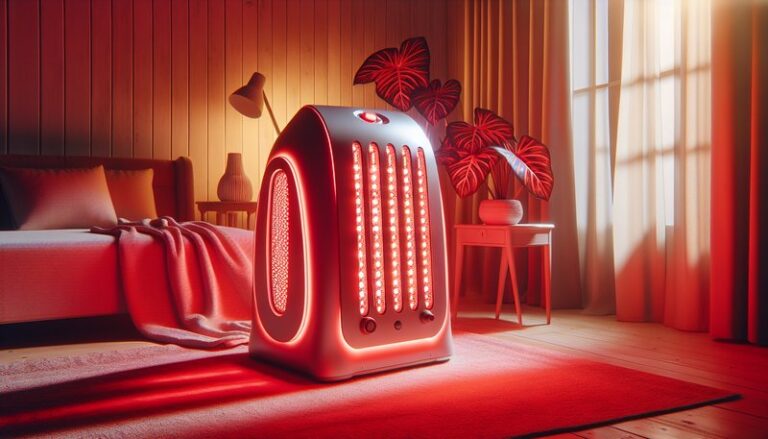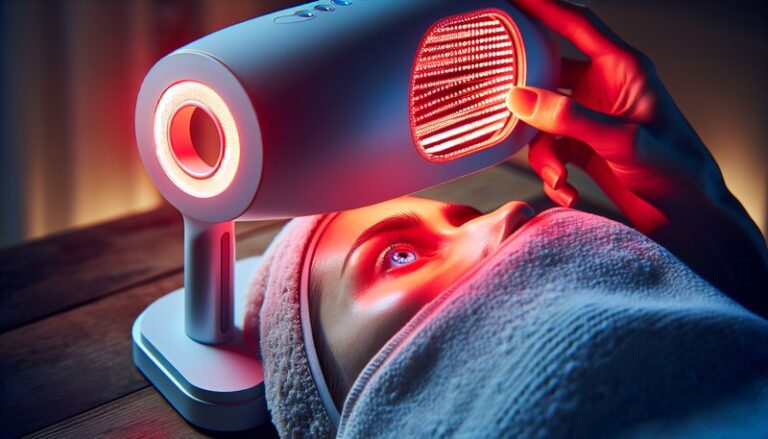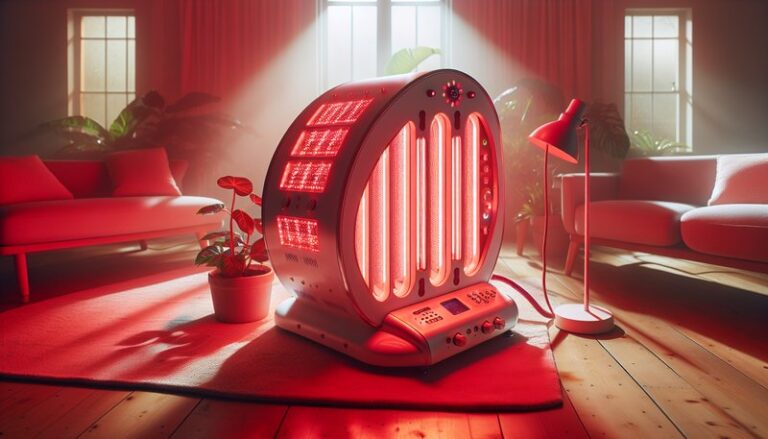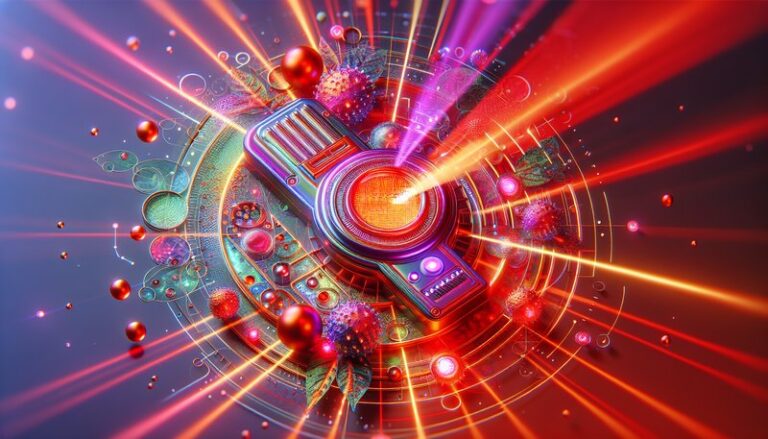Can Red Light Therapy Increase Testosterone?
Can Red Light Therapy Increase Testosterone?
What if a simple, non-invasive treatment could help boost your testosterone levels?
This article will explore the relationship between red light therapy and testosterone, examining what red light therapy is, how it might influence hormone levels, the potential benefits and drawbacks, alternative methods, and the considerations involved. By the end, you’ll have a clearer perspective on whether red light therapy could be a viable option for increasing testosterone.
Key Takeaways
- Red light therapy utilizes specific wavelengths of light to promote various health benefits.
- Preliminary research suggests red light therapy may help increase testosterone levels in some individuals.
- As with any treatment, it is essential to weigh the benefits against potential risks and consider alternative options.
What is Red Light Therapy?
Red light therapy (RLT) is a treatment that uses low-level wavelengths of red or near-infrared light to promote healing and reduce inflammation. It is often applied using LED devices that emit specific wavelengths. RLT is considered a form of phototherapy and has gained popularity for its purported benefits in skin rejuvenation, wound healing, and pain management.
How Does Red Light Therapy Work?
RLT works by penetrating the skin to reach cellular structures like mitochondria. Mitochondria convert light energy into cellular energy (ATP), which can enhance cellular function and promote healing. This energy boost can potentially help various physiological processes, including hormone production.
The Science Behind Testosterone
Testosterone is a crucial hormone in the body, particularly for men, playing vital roles in muscle strength, libido, mood regulation, and overall health. Testosterone levels can be influenced by various factors, including age, lifestyle, and environmental factors. Understanding how RLT interacts with the endocrine system is essential for assessing its potential impact on testosterone levels.
What are the Benefits of Red Light Therapy?
Red light therapy offers a range of potential benefits that can contribute to overall well-being. Below are some of the most notable advantages:
Enhanced Recovery and Healing
RLT has been shown to accelerate the healing process in various conditions, including sports injuries and minor wounds. By enhancing mitochondrial function, tissues can repair themselves more effectively, which is beneficial for overall physical health.
Improved Mood and Sleep Quality
Some studies suggest that red light exposure may help regulate circadian rhythms, leading to better sleep and improved mood. Since mood can influence hormone production, this indirect benefit might contribute to enhanced testosterone levels.
Potential Testosterone Increase
Emerging research indicates that red light therapy could stimulate the Leydig cells in the testes to produce more testosterone. While studies are still in preliminary stages, initial findings are promising and warrant further investigation.
Anti-Inflammatory Effects
Chronic inflammation can negatively impact hormone production and overall health. RLT has anti-inflammatory properties that may help reduce inflammation levels, potentially leading to better hormone regulation.
Is it Possible to Increase Testosterone with Red Light Therapy?
While many individuals seek ways to enhance testosterone levels, the effectiveness of red light therapy is still under investigation. Initial studies show promising results, suggesting that RLT may stimulate testosterone production, especially in men with low hormone levels.
What are the Advantages of RLT for Testosterone Increase?
Using red light therapy to potentially boost testosterone levels comes with several advantages:
Non-Invasive Procedure
RLT is a non-invasive treatment, making it a safer alternative to more aggressive testosterone replacement therapies.
Minimal Side Effects
Most users experience minimal side effects, especially compared to hormone therapy, which may induce various unwanted effects.
Accessibility
With the proliferation of at-home devices, RLT has become more accessible, allowing users to integrate it easily into their routines.
What are the Disadvantages of RLT for Testosterone Increase?
While promising, there are some disadvantages to consider:
Limited Research
Current studies on RLT and testosterone are limited and primarily preliminary. More extensive research is needed to establish definitive conclusions regarding effectiveness.
Cost of Equipment
High-quality red light therapy devices can be costly, which may be a barrier for widespread use.
Individual Variability
Results may vary from person to person. Some people may see significant benefits, while others may not experience any change in testosterone levels.
What are the Things to Consider Before Trying Red Light Therapy?
Before embarking on a red light therapy routine, there are several factors to consider.
Consult with a Healthcare Provider
Always consult with a healthcare professional to discuss any underlying health issues or conditions that might affect hormone levels or influence the effectiveness of RLT.
Understand Your Needs
Assess your current testosterone levels and understand your specific health needs. What works for one person may not be suitable for another.
Choose a Quality Device
Not all red light therapy devices are created equal. Research and select a device recommended for its effectiveness and safety based on clinical studies or user reviews.
Check out our breakdown Red Light Therapy for Cold Sores: Does It Work?
Evaluate Your Lifestyle
Consider how RLT fits into your overall health and wellness plan. Ensure that you adopt complementary habits, such as exercise and diet, to optimize results.
What are the Alternatives to Red Light Therapy?
For those not inclined to try red light therapy, several alternative methods exist to boost testosterone levels.
Diet and Nutrition
Adopting a balanced diet rich in healthy fats, protein, and micronutrients can help boost testosterone levels. Foods such as lean meats, nuts, and leafy greens are beneficial.
Exercise Regularly
Regular physical activity, particularly resistance training and high-intensity interval training (HIIT), has been shown to increase testosterone levels naturally.
Consider Lifestyle Changes
Adequate sleep, stress management, and avoiding harmful substances like excessive alcohol can support overall hormonal balance and improve testosterone production.
Supplements
Certain supplements, such as zinc, vitamin D, and ashwagandha, have been linked to improved testosterone levels. However, consult a healthcare provider before starting any supplementation.
Discover Is Red Light Therapy Effective for Psoriasis?
Conclusion: Is it Recommended to Use Red Light Therapy for Testosterone Increase?
While red light therapy shows promise in potentially increasing testosterone levels, further research is necessary to validate its effectiveness robustly. Given its non-invasive nature and minimal side effects, RLT could be an excellent complementary option for individuals looking to boost testosterone, especially when combined with other healthy lifestyle practices. As always, consulting with a healthcare professional is crucial before implementing any new treatment.
Frequently Asked Questions
Does red light therapy have any side effects?
Red light therapy is generally considered safe, with minimal reported side effects, such as temporary redness or irritation. However, individual responses may vary, so it’s advisable to monitor your body’s reactions.
How long does it take to see results from red light therapy?
The timeline for results can vary depending on individual circumstances and the specific health issue being addressed. Some people may notice changes within a few weeks, while others may take longer.
Can red light therapy be used alongside other treatments?
Yes, red light therapy can often be safely used alongside other treatments. However, it is essential to consult with your healthcare provider to avoid potential interactions.
Are there specific wavelengths of light that are best for testosterone increase?
Research suggests that wavelengths in the range of 600 to 660 nanometers and 800 to 850 nanometers may be most effective for therapeutic purposes, but individual devices may vary.
How often should I use red light therapy for optimal results?
Frequency can vary based on individual needs and the device’s specifications. Generally, sessions ranging from 10 to 30 minutes, several times a week, may be effective, but consultation with a healthcare provider can yield personalized recommendations.





